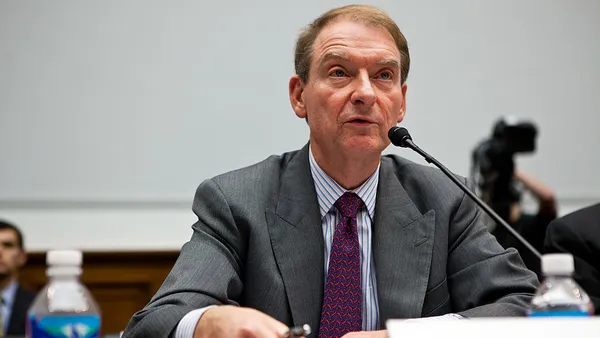Dive Brief:
-
While shareholders at most public companies (91%) this year have still cast their non binding proxy votes — dubbed say-on-pay (SOP) — in support of executive compensation plans, their support shows some signs of weakening, according to a review of the results from this year’s proxy season-to-date by Willis Tower Watson.
-
The chunk of companies with so-called say-on-pay proposals approved by 90% or more of their shareholders ticked down to 71% so far this year from 74% last year, while the portion of firms getting the thumbs up from 70%-90% of their shareholders ticked up to 20% from 19% and the slice of those getting getting support from half or fewer was bigger at 6% of the companies, up from 4% in 2021, the analysis found.
-
“There’s been a kind of back-to-business approach, in that proxy advisors and more-so institutional investors are tightening the scrutiny of these say-on-pay proposals,” Brian Myers, a WTW director who specializes in governance and compensation issues, said in an interview.
Dive Insight:
The signs of an emerging shift in shareholder proxy votes comes as the Securities and Exchange Commission (SEC) has moved to increase regulatory scrutiny of executive compensation.
Last week the SEC adopted new bonus clawback rules that will require publicly listed companies to recover “erroneously’ awarded incentive-based pay received by current or former executive officers during the three-year period preceding an accounting restatement due to material noncompliance.
Meanwhile, in August the SEC adopted new pay-versus-performance disclosure rules that will require public companies to disclose further details regarding how top executives are paid.
Early in the pandemic Myers said shareholders grew more willing to consider resetting targets in incentive plans set up prior to shutdowns, as shutdowns dramatically changed the operating environment and many companies’ financial performances. That was a big change, he said.
“Historically, prior to COVID, you set the longer-term incentives goals and you let that period ride,” he said. “There was not much appreciation from institutional investors for moving the goalposts after the fact.”
Shareholders grew more forviging during the pandemic. But now the pendulum appears to be swinging back as there’s less of an appetite to see changes to performance measures absent a very strong rationale, he said. Looking ahead Myers said he expects that heightened scrutiny to continue to tighten as we start to see pay performance disclosures beginning to be made available, Myers said.
The SEC adopted rules for say-on-pay disclosures in 2011.













